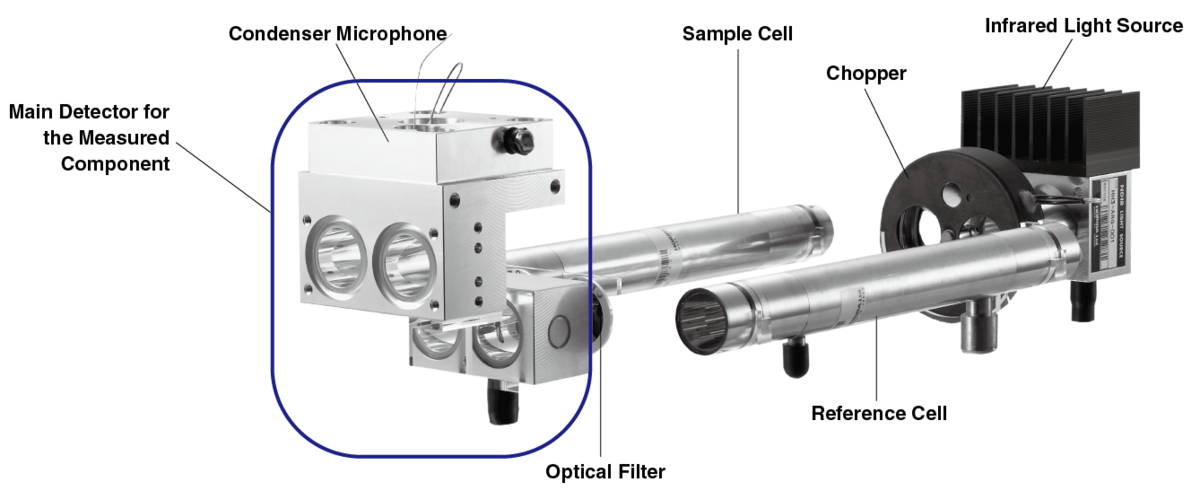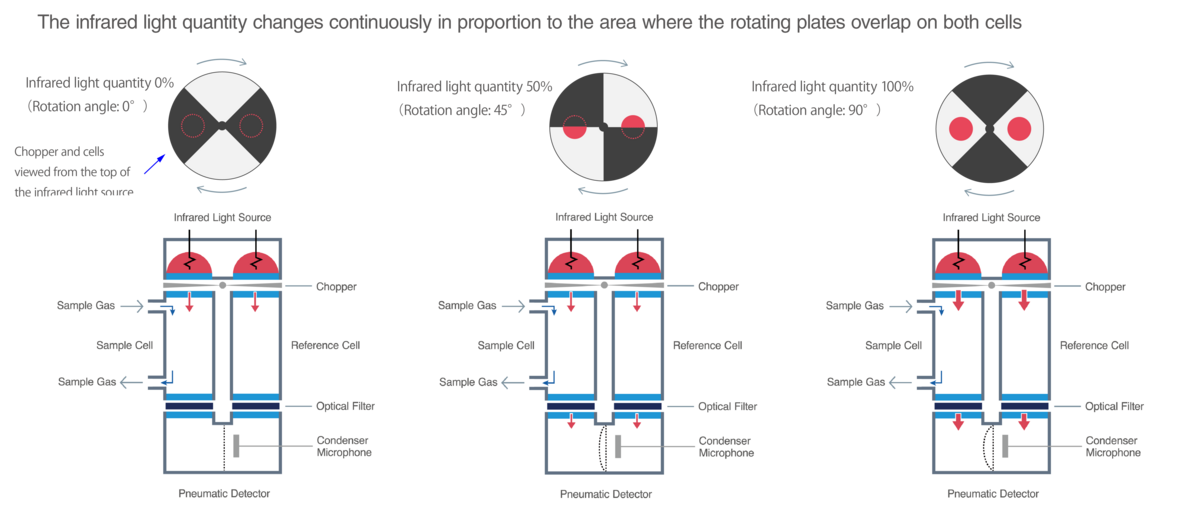Inside the pneumatic detector (Figure 5), CO, a measured component, is contained in both chambers separated by a condenser microphone diaphragm. The diaphragm of the condenser microphone in the detector moves due to the pressure difference between the two chambers, changing capacitance of a capacitor formed with this diaphragm and the back plate, and the pressure difference is detected as an electrical signal.
In the reference cell, an inert gas such as N2 that does not absorb infrared radiation is enclosed. In this cell, infrared radiation is not absorbed and only the infrared radiation of absorbing wavelength for CO is transmitted through the optical filter and enters the right chamber of the detector below the reference cell. The enclosed CO absorbs transmitted infrared radiation and generates heat, which increases the chamber pressure and constantly pushes the diaphragm at a constant pressure.
On the other hand, infrared radiation is absorbed in the sample cell depending on the CO concentration in the exhaust gas. The infrared radiation of a specific wavelength after being absorbed in the sample cell, is selectively transmitted by the optical filter for the infrared absorption wavelength of CO and enters the left chamber of the detector below the sample cell, pushing the diaphragm at a pressure corresponding to the amount of infrared radiation absorbed by the CO enclosed in the left chamber. At this time, the diaphragm moves by the pressure difference between the left and right chambers (not moving or moving to the leftchamber. As for pressure, left chamber ≦ right chamber). This pressure difference is converted and output to an electrical signal as the infrared absorption of CO in the exhaust gas, which is converted to a CO gas concentration value by the signal processing unit.






